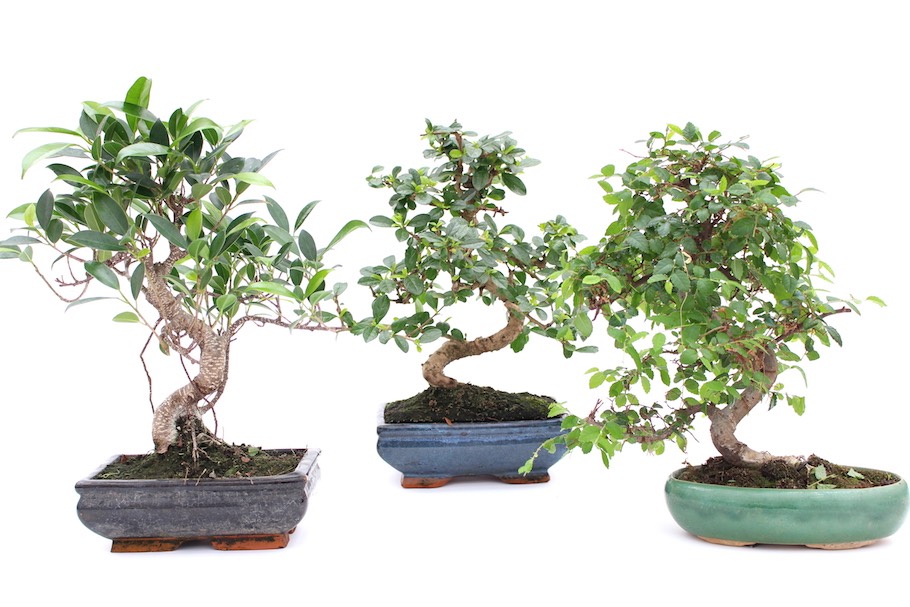Which Bonsai is best for indoors?
There are several tropical and subtropical trees that you can grow indoor. The most common, and the easiest to care for, is the Ficus Bonsai. The Ficus is tolerant of low humidity and is very resilient, making it an excellent choice for beginners.
Other popular indoor Bonsai include the Dwarf jade, the Fukien tea (Carmona), the Hawaiian umbrella (Schefflera), and the Sweet plum (Sageretia). If you select one of these trees and care for it properly, your Bonsai will thrive indoor.

Why can’t I keep temperate, nontropical, Bonsai indoor?
As stated above, temperate trees need a period of dormancy in the winter. In this period of dormancy, the yearly growth cycle ends, and the tree prepares for the next cycle which will start again in early spring. A tree becomes dormant when temperatures and light intensity gradually decrease over several weeks, which does not happen when you keep temperate trees indoors. Tropical and subtropical trees do not need this period of dormancy.
Indoor Bonsai tree care
Caring for an indoor Bonsai is different from that of normal potted house plants. The main reason is that Bonsai trees are planted in small pots and therefore have limited storage for nutrients and water. More importantly, tropical trees are accustomed to receiving a lot of light and high humidity, climates that are challenging to replicate indoors.
Specific care of indoor Bonsai species:
1. Light
The main problem with keeping a tropical Bonsai tree indoors is that the intensity of light is much lower than outdoors. Trees won’t die immediately if they don’t get enough light, but growth will decrease and weaken the plant over time. That’s why placing your Bonsai in a bright location, preferably directly in front of a window facing the south is highly recommended when growing Bonsai indoors.
Even when you have a south-facing window, the light intensity may still be too low. You can supplement this deficit of light with artificial lighting to help your tree. For example, you can use fluorescent lighting with radiating growth-friendly spectra, or light-emitting diode lighting for about 10 hours a day. Read more about Placement.
2. Humidity
Another issue with keeping a Bonsai tree indoors is that the tree needs relatively high humidity, much higher than the conditions of your house, especially with heating or air conditioning. You can increase the humidity near your Bonsai tree by placing it on a humidity tray filled with water and by misting your tree a few times a day. You can also circulate air from outside, by opening a window during the day.
3. Watering and fertilizing
The most important rule is, never water on a routine. Ignore the label attached to your Bonsai tree which states you need to water every x amount of days. The best practice is to monitor your tree and its soil, and only water when it’s needed. Please read the Watering and Fertilizing pages for detailed information.
4. Temperature
Tropical tree species need relatively high temperatures throughout the year, similar to the standard room temperature of your living room.
Subtropical Bonsai trees can withstand somewhat lower temperatures, and generally thrive when they enjoy a winter season with temperatures well below that of the standard room temperature.
To summarize, make sure to select the right tree species and take into account the specific care guidelines for indoor trees and your bonsai will do just fine!





